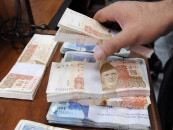Prospects and fears for Pakistan’s furniture industry

Prospects and fears for Pakistan’s furniture industry
Italy is the world’s biggest exporter of furniture followed by Germany and Canada. United States is the biggest importer of wooden furniture followed by Germany and France.
Pakistan’s share in the international wooden furniture market is insignificant, despite the fact that the country has a history of craftsmanship and innovation in the field of wooden furniture.
The wooden furniture industry represent 95 percent of the total market in the country. The leading furniture making areas of Pakistan are Chiniot, Gujrat, Peshawar, Lahore and Karachi. In terms of exports, Karachi comes first, followed by Lahore and Peshawar.
But prospects are not rosy. Exporters are suffering manifold problems while local manufacturers are facing challenges due to heavy imports of furniture. Chinese furniture has also hit the local industry by 70 percent and the sales of locally manufactured household furniture have gone down by 30 percent.
Pressure on the domestic industry has immensely increased as other countries like Thailand and Korea have started exporting extensively to Pakistan.
At the same time, the high cost of the furniture business has threatened the sector as a whole. The prices of all raw materials used in making furniture which include chipboard, timber, foam, polish chemical materials, color paints and hard ware have increased. Timber production on the other hand has gone down drastically because of unchecked deforestation.
As a result, imported chipboard is used in manufacturing bedroom sets, which sell the most. About sixty percent raw material used in furniture making is imported from China. Imported item mostly used in furniture making are chipboard, hardware items and glass.
Pakistan’s major buyers of wooden furniture are the UK, the USA, Sri Lanka and Gulf countries like the UAE, Saudi Arabia, Oman and Kuwait. The United States buys mostly bedroom furniture. UK and the Gulf countries import kitchen furniture and office furniture. For example, the British retail chain Harrods sells some Pakistani furniture at its outlets.
In Pakistan, the wooden furniture industry can be categorized into small scale and cottage. These units unfortunately use obsolete machinery, inadequate tools and manual labor for manufacturing wooden furniture. This means high costs and poor output.
There are more than 700 units of wooden furniture in the country. The market is divided into home use and contract markets. The contract market constitutes those units that deal with supplies to hotels, restaurants, offices and public facilities.
Chiniot in Pakistan is well known throughout the word for its beautiful wood carvings and brass inlays. Its furniture is better in quality than that of other areas of the country.
More than 80 percent of the furniture demand in the country is met by the Chinioti furniture. This industry, combined with the handicraft industry, is employing about 50,000 people.
The wooden furniture industry in Gujrat is also flourishing and contributing a large amount of foreign exchange earnings to Pakistan. About 70 to 80 percent furniture is made of sheesham.
Furniture items produced in Sindh and parts of Punjab are more cottage industry based and for domestic use only. Most of the furniture produced is simple but heavy in weight and is sold locally rather than exported.
A number of households in Hala, Kashmore, Khanewal and Dera Ghazi Khan employ traditional workmanship, despite drastic change in the tastes of customers. Similarly, Swati furniture has basically broad sets and geometrical floral designs carved in various styles of wood work. It is a shame that neither has made any markets abroad.
The statistics overall are not encouraging. The export of furniture which was worth US$3.46 million rose to US$6.05 million in 2001-01, thus depicting an increase of 12 percent per annum.
Exports of furniture have gone down since 2007 due to political and economic turmoil coupled with load shedding. It is observed that no importer has entered the Pakistani market and no one is ready to book orders by browsing through designs at company web-sites.
Quality export furniture is being produced at Chiniot, Gujrat, Peshawar, Rawalpindi and Karachi. The demand for Pakistani furniture has been rising constantly. It has bright prospects to export more than $1 billion worth of furniture annually in the international furniture market.
For this to happen, the furniture industry in Pakistan must vigorously transform from cottage or small scale industry to innovative industry through training, upgrading supplies and imports, establishing a wood work institute and testing laboratories of international standards. Japan is an important market to tap. Efforts must be made by promoting furniture exports by more regular participation in international shows. All this can happen if there is government will and a vision amongst furniture traders. So far, this remains to be seen.
Published in the Express Tribune, June 7th, 2010.


















COMMENTS
Comments are moderated and generally will be posted if they are on-topic and not abusive.
For more information, please see our Comments FAQ